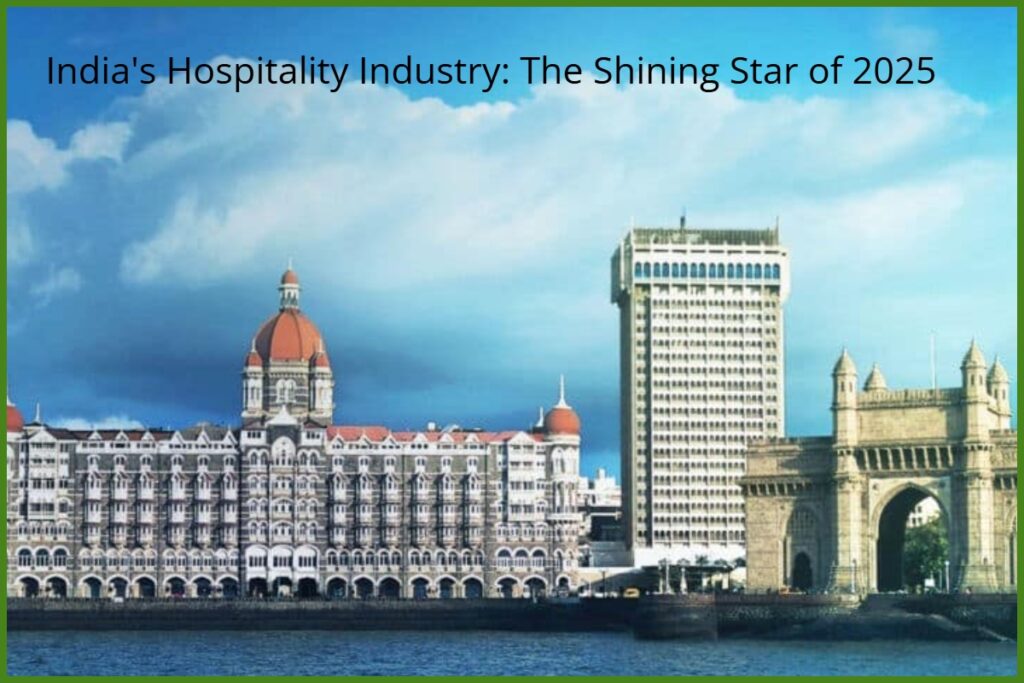The Indian hospitality sector is experiencing unprecedented growth in 2025, establishing itself as a beacon of economic opportunity and innovation. With remarkable increases in occupancy rates, room pricing, and overall revenue, the industry is not merely expanding—it’s undergoing a transformative renaissance that positions India as a global hospitality powerhouse.
January 2025 set the tone for what promises to be an exceptional year, with occupancy rates climbing 2-4 percentage points year-over-year across most major markets. The Average Room Rates (ARR) demonstrated impressive growth of 10-12% compared to the previous year, reaching ₹9,100-9,300. This positive momentum has driven Revenue Per Available Room (RevPAR) up by 15-17%, settling between ₹6,006-6,324.
Industry analysts predict this upward trajectory will continue, with the sector on track to achieve its highest RevPAR in a decade by the end of FY2025. Looking further ahead, projections for FY2026 suggest occupancy rates could soar to 72-74%, with premium hotels commanding ARRs of ₹8,000-8,400.
Supply-Demand Dynamics Fueling Growth
The branded hotel segment currently encompasses approximately 166,000 rooms across chains like Marriott, IHCL, and Lemon Tree. Despite plans to add 55,000 rooms over the next five years, demand consistently outpaces supply—creating the perfect conditions for sustained pricing power and revenue growth.
This favorable imbalance has contributed significantly to the industry’s projected 7-9% revenue growth for the year, cementing hospitality as one of India’s most promising economic sectors.
Beyond the Metros: Emerging Hotspots
While metropolitan areas have traditionally dominated India’s hospitality landscape, 2025 is witnessing an exciting geographical diversification:
- The National Capital Region continues to thrive but with a strategic pivot toward weekend leisure accommodations alongside traditional business hotels
- Kerala has elevated its position in luxury tourism, with eco-friendly resorts and authentic Ayurvedic wellness experiences setting new standards for high-end hospitality
- Smaller cities and previously overlooked destinations are attracting significant investment as domestic tourism booms
Catalysts for Continued Expansion
Several key factors are driving this exceptional growth:
- Enhanced Connectivity: The addition of 17 new airports since 2020 has dramatically improved accessibility for both domestic and international travelers
- Cultural Tourism Surge: India’s rich cultural and religious heritage is attracting an increasing number of domestic travelers eager to explore their national identity
- MICE Tourism: Cities like Mumbai, Bengaluru, and Delhi have become regional hubs for Meetings, Incentives, Conferences, and Exhibitions
- Market Maturation: The sector is witnessing significant financial evolution with new stock exchange indices, IPOs, and increased investment opportunities
The Investment Opportunity
For investors and industry stakeholders, India’s hospitality sector represents an increasingly sophisticated market with substantial growth potential. The convergence of robust domestic demand, recovering international tourism, infrastructure development, and diversifying accommodation options creates a landscape ripe with opportunity.
As we move through 2025, India’s hospitality industry isn’t just growing—it’s fundamentally redefining the global travel experience through a unique blend of tradition, innovation, and exceptional service delivery.


